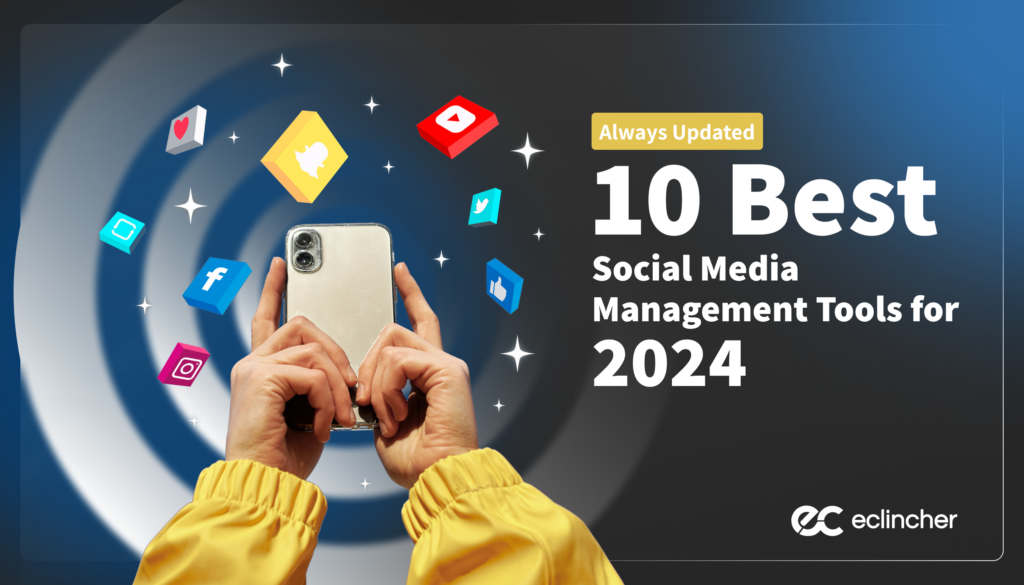About one of four pages on Facebook utilizes paid media, and about 23% of total U.S. digital ad spend already goes to Facebook. Today, brands are focused on closing the ads gap because short attention and rising ad costs are limiting their ROI. Marketers are now paying to boost their most quality organic content. They want to pair their ad money with targeting savvy, creativity, and equal time investment. They want creative and attention-grabbing social ads. Currently, Netflix and Spotify are leading the way with their entertaining and personalized social ads instead of just squeezing banner ads into their news feeds. To align with this trend in 2019 and to close the ads gap, eClincher brings you a few valuable pieces of social media advertising advice to follow.

7 Social Media Advertising Tips
1. Research and Understand Your Target Audience
Understanding and targeting the right audience is always step #1 in any marketing strategy. It’s key to high customer engagement. Each one of your ad campaigns should target a focused demographic based on previous interaction with your brand, jobs, interests, and relevant competitors. Social media platforms, such as Facebook, Instagram, and LinkedIn, come with advanced targeting options. If you don’t know who to target, you need to understand what issues and challenges your customers face. Also, find out how they interact with your brand, business, products, and services.
2. Define Goals and Metrics

Every social media advertising campaign must have set goals and metrics. Without them, you won’t have anything to tie back to your business objectives and a way to measure your campaign’s success. You need to show whether social media has the right bottom-line impact on your business. As for metrics, they’ll depend on the audience you are targeting and the type of campaign you are running. If you run a conversion campaign, you will measure your click-through rate, while awareness campaigns might put more focus on impressions. Social media can also be great for franchise advertising.
3. Create High-Quality Content
Prioritize content quality to eliminate overpaid, ordinary posts. Brands need to leverage the creativity of their content production team to produce material that will resonate with their target audience. Compelling visuals are crucial for high conversion rates and clicks on social networks. However, not many brands have a professional crew or the budget for expensive equipment. Luckily, there are many tools and ways to learn content creation basics. Also, you can outsource these skills by hiring an experienced freelancer. When hiring a freelance content creator, make sure to determine the type of material you need. Also, determine your budget, share your job posting in freelancer communities, and ask for their portfolio.
4. Explore New Ad Formats
Being an early adopter of any new social media feature can give you an advantage over your competitors. In this case, we’re talking about new ad formats that keep coming our way. Social media is the space of constant innovation, and new formats are great for tapping into consumer curiosity. For example, brands have been using Instagram Stories ads since 2017. Facebook Messenger ads allow companies to connect directly with their customers with instant messaging, while Pinterest recently rolled out wide-format promoted videos.

5. Repurpose Your Best-Performing Organic Content for Social Ads
It’s a pretty straightforward strategy. Create an ad concept and test it as an organic post first. Once you see what works and what doesn’t, adapt and repurpose the highest-performing content to an ad format. This way, you will invest your resources into a social media advertising strategy that’s already been tested and improve your ROI.
6. Conduct A/B Testing
When talking about advertising, the risk is always there, lurking around the corner. Regardless of how savvy your content creation and ad teams are, you can’t predict whether users will surely click on your ads. That’s where A/B testing (or split-testing) comes in. The process involves running several ads with slight variations. Then, you double down on the top-performing ads and find out what appeals to your audience best. You can use a third-party ad tool for streamlined testing with tons of options. On the other hand, you can use Facebook’s creative ads and the basic split testing functionality they offer.
7. Learn From Your Previous Experiences
Whenever you run ads and measure their performance, be sure to document everything. With each new ad, you can compare your past results and set benchmarks for your future endeavors. As a unified social media management tool, eClincher provides analytics that can help you understand follower trends, the performance of your posts, how often your brand was mentioned, and many more metrics.
The tool also supports Google Analytics and allows you to produce customized reports. Track results and revenue generated by your social media advertising and marketing efforts. In closing the ads gap, measuring outcomes is essential.

eClincher
The team around eClincher is here to support your efforts to stay on top of all current social media trends. Our social media management suite is designed to help you navigate the ever-changing social media landscape and help you effectively engage with your users. Connect all your social media accounts to a unified dashboard, schedule and publish posts, and auto post with RSS feeds or Smart Queues. Engage in conversations from the Social Inbox, monitor what’s happening online by tracking mentions, keywords, and hashtags, and discover new content to curate. Optimize your processes and maximize your social impact with this platform. Following social media trends doesn’t guarantee success. Before you decide to incorporate it into your social media strategy, be sure that you remain consistent with your business and brand efforts. When it comes to closing the ads gap, the goal is to generate engagement and discussion instead of merely broadcasting an ad to your audience. Build your social media marketing team (both outsourced and in-house) with experienced content creators skilled in design, video, photography, and motion graphics. Leverage the power of advanced ad targeting tools which enable you to conduct split-testing. In social media marketing, this is slowly becoming the norm.






